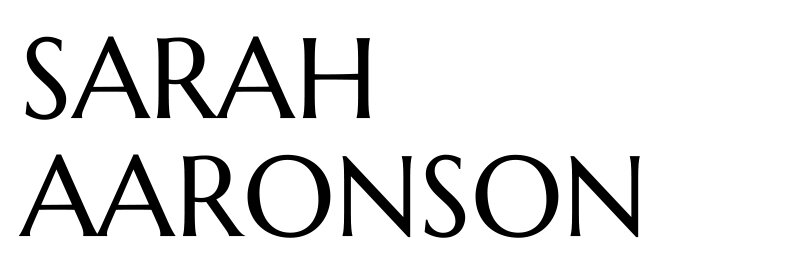SOLOMON’S SEAL
Perhaps the fact that the visionary designer and artist Miguel Adrover comes from both Arab and Jewish descent, played into his design book for his Fall 2001 Collection. Adrover sited his time in Egypt as having greatly influenced his creative process for the collection. The ambience of the show almost unintentionally conjured up the uncovering of the thousands of Jewish manuscript fragments found in neglect in a hidden repository at the Cairo Geniza over a century ago. It’s almost as if some of the garments themselves resembled the forgotten fragments left in the dust. Perhaps Adrover’s use of hexagrams or Magen Davids on his textiles, with their roots deeply intertwined in both ancient Islamic and Judaic mysticism, could have subconsciously brought the complex nature of his background to the surface of this strangely dark and yet harmoniously beautiful collection.
Midrash David on Genesis, Colophon • Paper • Circa 12th - 13th Century • Cairo Genizah • Ben Ezra Synagogue • Fustat (Old Cairo) • Image courtesy of the University of Pennsylvania, Center for Advanced Judaic Studies Library
“Miguel Adrover and his creative director, Sebastian Pons, spent six weeks in Egypt, lived with a family in the countryside for 24 days, and returned to New York with enough inspiration for a full-fledged Middle Eastern collection... Adrover’s Egyptian jaunt, which was staged in an incense-drenched market-turned-tent, included everything from floor-length caftans and coats worn with turbans and chadors to blazers with harem pants and jodhpurs, layered printed tunics and jet-black robes…” • Quote and all runway images courtesy of Vogue
Unsorted Fragments of Jewish Manuscripts • Circa 9th - 19th Century • Cairo Genizah • Ben Ezra Synagogue • Fustat (Old Cairo) • Image courtesy of the Cambridge University Library Special Collections
The Cairo Geniza is a collection of some 400,000 Jewish manuscript fragments and Fatimid administrative documents that were found in the geniza, or storeroom, of the Ben Ezra Synagogue in Fustat (Old Cairo), Egypt. The Geniza texts are written in various languages, especially Hebrew, Arabic and Aramaic, mainly on vellum and paper, but also on papyrus and cloth. These manuscripts outline a 1,000-year continuum (870 CE to the 19th Century) of Jewish, Middle-Eastern and North African history and comprise the largest and most diverse collection of medieval manuscripts in the world.
A parchment fragment exhibiting multiple types of damage found across the collection • Cairo Genizah • Ben Ezra Synagogue • Fustat (Old Cairo) • Image courtesy of the Cambridge University Library Special Collections
Unsorted Fragments of Jewish Manuscripts • Circa 9th - 19th Century • Cairo Genizah • Ben Ezra Synagogue • Fustat (Old Cairo)
Arabic Petition with Hebrew Writing • Cairo Genizah • Ben Ezra Synagogue • Fustat (Old Cairo) • Image courtesy of The Times of Israel
Joining Fragments of an Illuminated Ketubbah • Cairo Genizah • Ben Ezra Synagogue • Fustat (Old Cairo) • Image courtesy of the Cambridge University Library Special Collections
Judges 8:12 - 9:54 with Greek Glosses in Greek Characters • Circa 10th - 12th Century • Byzantine • Cairo Genizah • Ben Ezra Synagogue • Fustat (Old Cairo) • Image courtesy of the Cambridge University Library Special Collections
Fragment of a Jewish Manuscript • Cairo Genizah • Ben Ezra Synagogue • Fustat (Old Cairo) • Image courtesy of Scribes of the Cairo Geniza
Mishnah, Zera'im, Biḳurim 3:2 - 4:2 • Parchment • Circa 11th - 12th Century • Cairo Genizah • Ben Ezra Synagogue • Fustat (Old Cairo) • Image courtesy of the University of Pennsylvania, Center for Advanced Judaic Studies Library
Unsorted Fragments of Jewish Manuscripts • Circa 9th - 19th Century • Cairo Genizah • Ben Ezra Synagogue • Fustat (Old Cairo) • Image courtesy of the Cambridge University Library Special Collections
Ben Ezra Synagogue in Cairo • Image courtesy of the Ephemera Collection : The National Library of Israel
Responsum With Autograph • Paper • Circa 1204 - 1237 A.D. • Cairo Genizah • Ben Ezra Synagogue • Fustat (Old Cairo) • Image courtesy of the University of Pennsylvania, Center for Advanced Judaic Studies Library
Solomon Schechter at Work in Cambridge • 1898 • Syndics of Cambridge University Library • Image courtesy of The British Museum
























